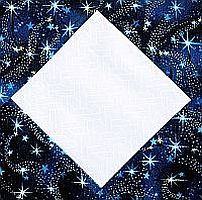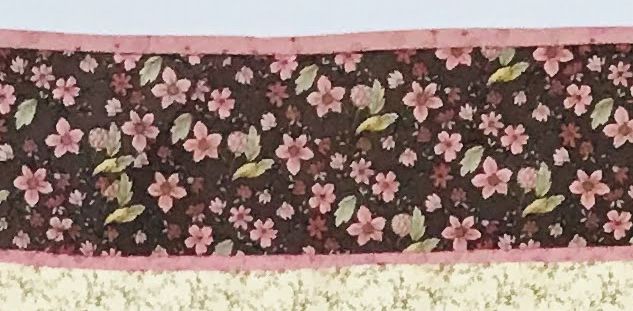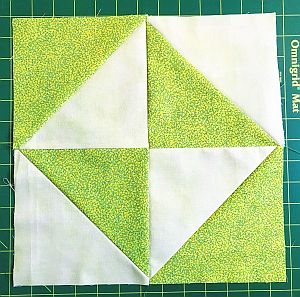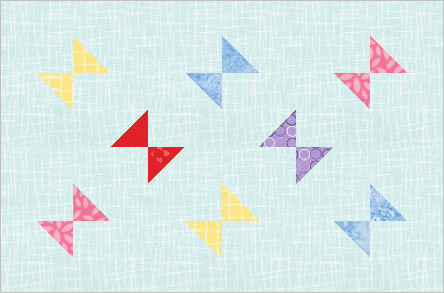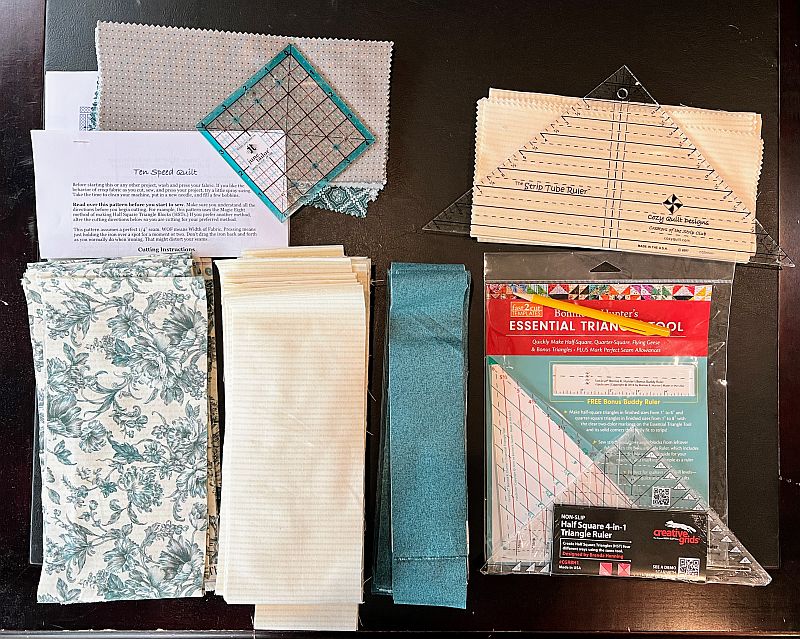Join our Super Sunday Mystery Quilt Sew-a-long! Dragonfly Dance Mystery Quilt Clue One
Note: This post may contain affiliate links. That means we may earn a commission at no additional cost to you if you purchase via our links. Not all links are affiliate links. I only recommend products I use and trust. As an Amazon Associate, I earn from qualifying purchases.
Today we will be making a 62″ x 77″ quilt, perfect for a lap, the couch or just cuddling. This quilt is easy to make in your favorite colors, especially when you use a bit of magic. If you precut (the instructions are here), you should be able to finish today!
Before we get started, Happy Groundhog Day!
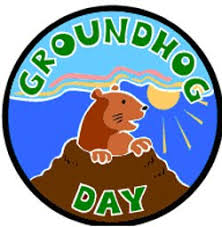
Before starting this or any other project, wash and press your fabric. If you like the behavior of crisp fabric as you cut, sew and press your project, try a little spray sizing when you press it. Take the time to clean your machine, put in a new needle and fill a few bobbins. Unless the pattern tells you otherwise, you should always assume that the seam in any quilting pattern is 1/4″ wide.
Pressing means just holding the iron over a spot for a moment or two. Don’t drag the iron back and forth as you normally do when ironing. That might distort your seams.
I am starting with the most time-consuming clue. If you don’t finish it all by the start of the next clue, don’t worry. There will be time here and there to finish it.
You have probably figured out by my frequent mentions of magic that we are going to make some Half Square Triangle blocks using the Magic Eight method. If you have never done it before, here is a quick tutorial.
The “Magic Eight” Method of Making
Half Square Triangle (HST) Blocks
This method works well when you need to make a lot of identically colored HST blocks. Here is an overview of the method. Make a test block first.
You can use this method for any size HST. To get the size of the square, just double the finished size of your final block and add 1-3/4″. The finished size of this block is 2″, so that would make our square ((2 x 2) + 1.75) or 5.75. And you thought you would never need maths again.
My personal preference is to cut the squares slightly too large so that I can square up the HST blocks later on. You might prefer to be more exact. That’s why I have you make a test block first.
Assemble:
- (1) 6″ x 6″ Background Squares
- (1) 6″ x 6″ Color Squares
On the back of the Background squares, draw 4 lines: one vertically through the center; one horizontally through the center and one on both diagonals. These will be your cutting lines.
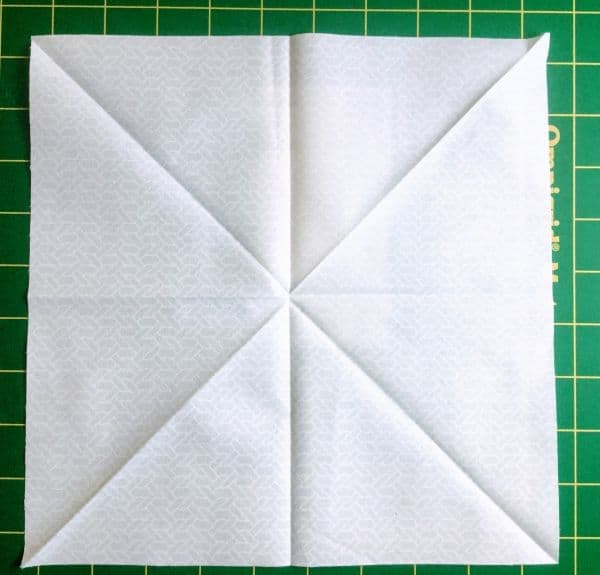
In the picture below, I have pressed the block rather than draw the line. It works out for me, but you may prefer to use a ruler and pencil to draw the lines.
Place the Background square and the color square right sides together. Sew 1/4″ on both sides of the diagonal lines. You will probably find it easier to chain stitch these. Sew all the squares diagonally first, going from one block to the next without snipping the thread in between the blocks. When that is done, you can do the other side.
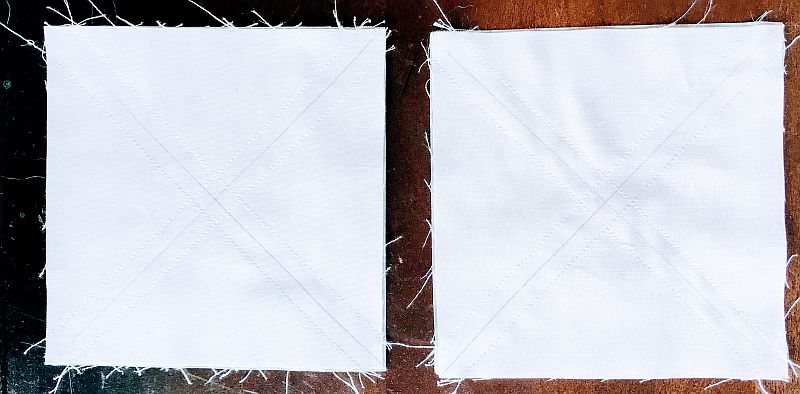
Press your sewn block. Don’t move the iron. Just press with a hot iron in an up and down motion. You want it to lay very flat before cutting. Cut it apart on the drawn lines. If you cut it apart using a rotary cutter, take care not to move the squares with each cut. A rotating cutting mat will come in very handy. When you have all the blocks cut, you will need to square them up.

There are two other ways you can square up your block. If you don’t have a Triangle Square Up Ruler, you can place a 3″ ruler so the diagonal line is directly over the seam and just cut two sides. Or you can press open the block (pressing to the dark) and square it up to 2-1/2″.
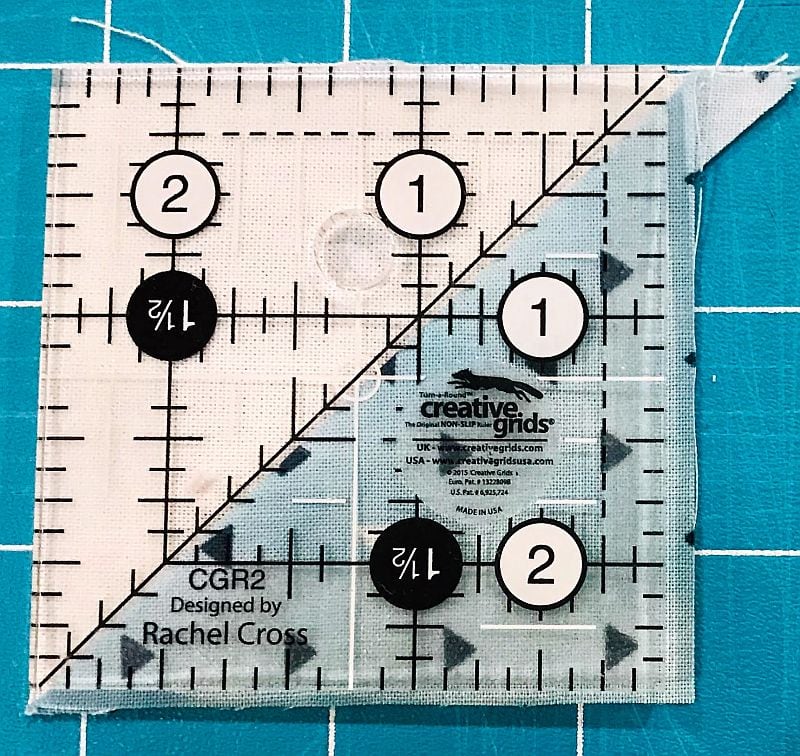
The Traditional Method of Making
Half Square Triangle (HST) Blocks
The Traditional Method of making Half Square Triangle Blocks (HSTs) is to place a 2-7/8″ x 2-7/8″ dark square right sides together with a
2-7/8″ x 2-7/8″ light square. Draw a diagonal line on the back of one square. Sew 1/4″ on both sides of the line. Cut on the line and press to the dark. You will have made two blocks which measure exactly
2-1/2″ x 2-1/2″ square.

My personal preference is to cut the original squares slightly too large (3″) and square up the HST to 2-1/2″ later on. If you prefer this method, just cut your 6″ wide squares in quarters to make them 3″ square.
Finally! The Clue!
Assemble:
- (10) Gold 5″ x 5″ squares (remember, my gold is a gray fabric)
- (10) Background 5″ x 5″ squares
Notice that these HSTs are smaller. If you are using the Magic 8 Method, you will need 5″ squares. If you are using the traditional method, you will need 2-1/2″ squares. Using your preferred method of making HSTs, make (80) gold and background HSTs. Press to the dark and square them up to 2″.
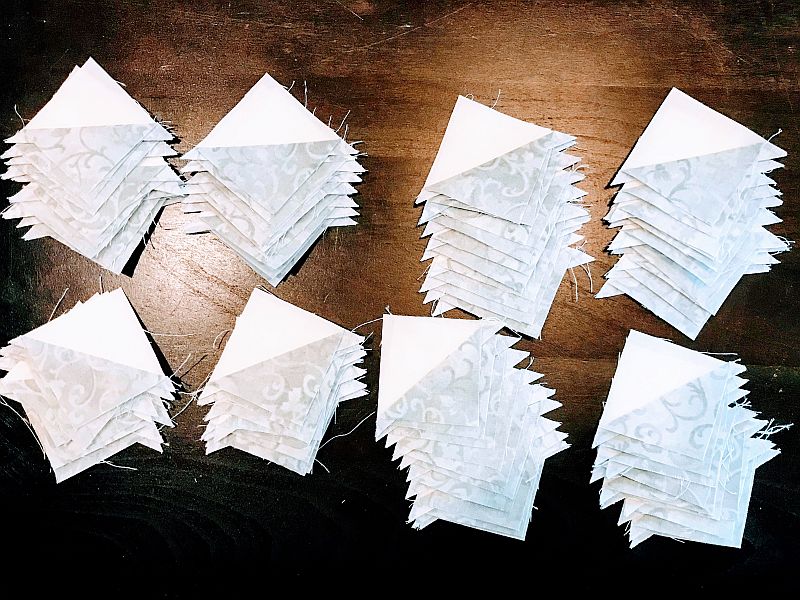
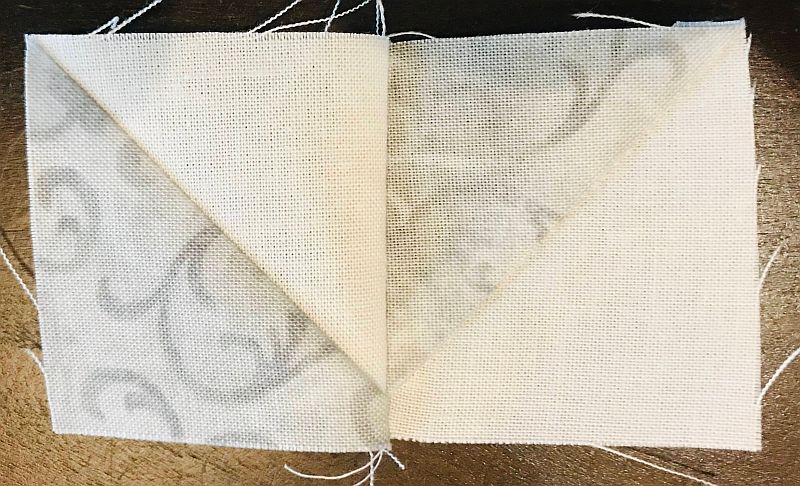
Use these HSTs to make (20) Pinwheels. When you sew the two HST blocks together, make sure the seams nest next to each other. This will help keep the point sharp. The unit below is half of a pinwheel.
Press the seams in opposite directions in the center. You can twirl the seams or press them open.

Press the blocks and square them up to 3-1/2″ if necessary. (To my surprise, I did have to square up a few. It can’t hurt to double-check!)

Here are the mystery Quilt Clues
- Introduction and Fabric Requirements
- Cutting Directions including Stripology Ruler Directions
- The Magic Eight Method of Making HSTs
- Making Matchstick Men
- Dancing Pinwheels
- Mitering Long Strips
- Surrounded Pinwheels
- Creating the Sashing
- Putting the Block Together
- Creating the Rows
- Putting it all Together
- Adding the Borders and Finishing
Questions or comments? Click on Leave a Reply below or Leave a Comment in the upper left-hand corner.
Don’t forget to sign up for the newsletter! Once a week, I send updates on quilt-related information I have found while wandering the web. This might be an inspiring article, a tip or tutorial I have discovered (or written), and occasionally exclusive offers & discounts as well as immediate access to the secret page of free patterns, guides, and printables. You can follow my page on Facebook, or join the Make Believe Quilters group, too.

